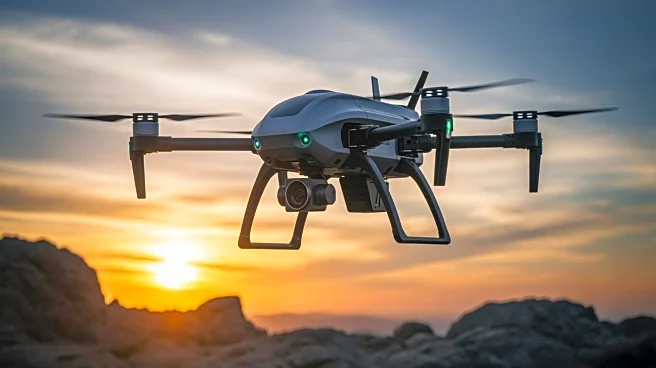What's Happening?
Ukrainian forces successfully rescued a wounded soldier trapped for 33 days behind Russian lines using a remotely operated robot. The soldier was located in Russian-occupied territory in eastern Ukraine, and previous attempts to rescue him had failed
due to landmines and drone attacks. The rescue mission was conducted by the 1st Medical Battalion of the Ukrainian Ground Forces, utilizing a MAUL ground drone designed for troop extraction. The robot, resembling an armored casket on an ATV frame, traveled approximately 40 miles, overcoming obstacles such as a damaged wheel from a landmine. The soldier was safely extracted and is now undergoing treatment and rehabilitation.
Why It's Important?
This operation highlights the innovative use of technology in military rescue missions, showcasing the potential for robotic systems to save lives in conflict zones. The successful extraction of the soldier underscores the importance of technological advancements in warfare, particularly in enhancing the capabilities of medical and rescue operations. The deployment of such robots could significantly impact military strategies, offering safer and more efficient methods for evacuating personnel from dangerous areas. This development may lead to increased investment in robotic systems for military use, potentially altering the landscape of modern warfare.
What's Next?
The Ukrainian military plans to expand the use of robotic systems in combat and rescue operations, as indicated by President Volodymyr Zelenskyy. The focus will be on scaling up ground robotic systems and drones to improve battlefield logistics and evacuation processes. The success of this mission may encourage other military units to adopt similar technologies, potentially leading to broader implementation across various conflict zones. The continued development and deployment of these systems could enhance the safety and effectiveness of military operations, providing a technological edge in future conflicts.
Beyond the Headlines
The use of robots in military operations raises ethical and legal questions regarding the automation of warfare and the role of human decision-making in combat scenarios. As robotic systems become more prevalent, discussions around the implications for international law and the rules of engagement may intensify. Additionally, the reliance on technology in warfare could lead to shifts in military training and strategy, emphasizing the need for expertise in operating and maintaining advanced systems.















